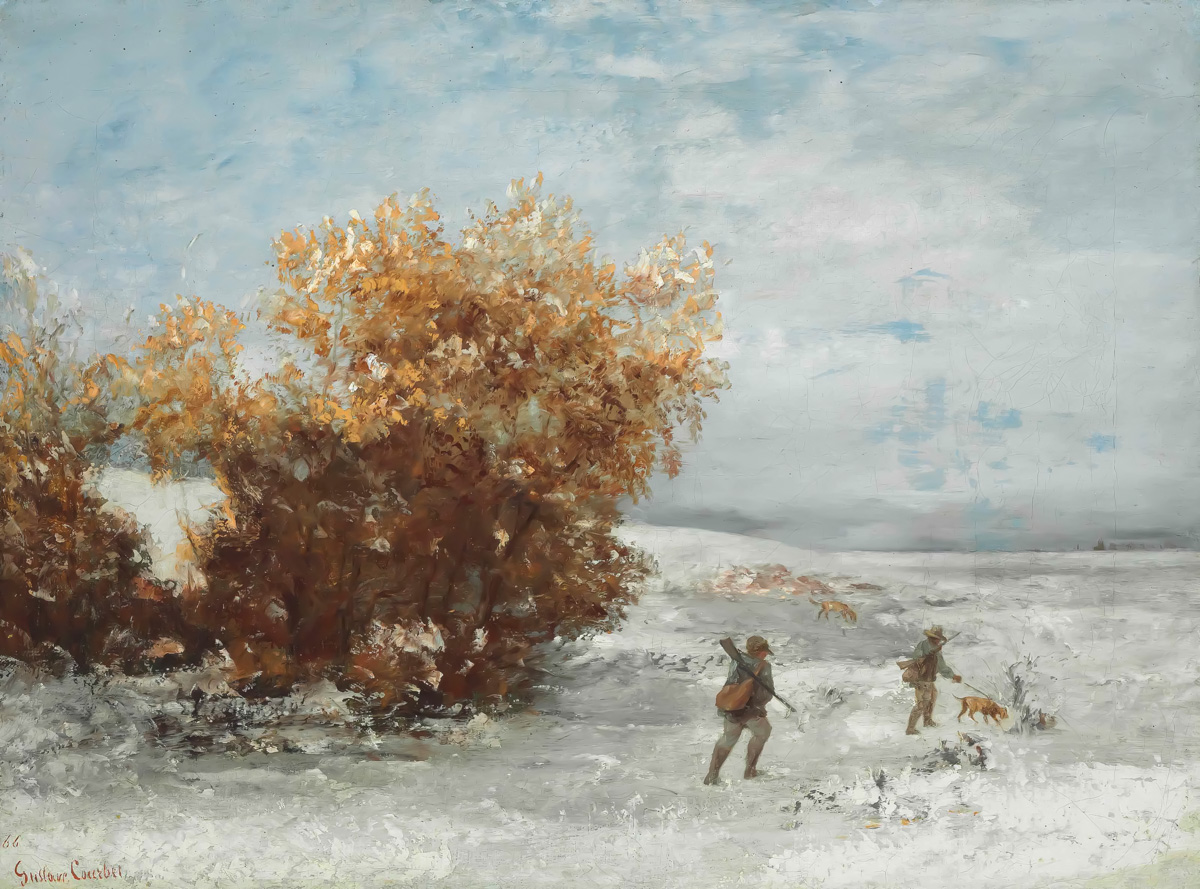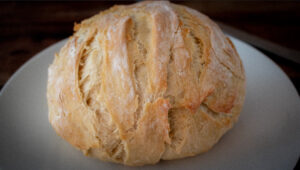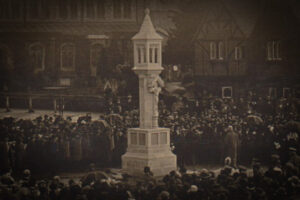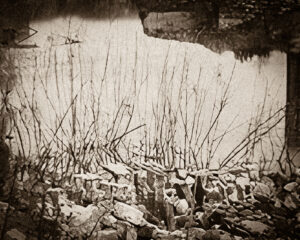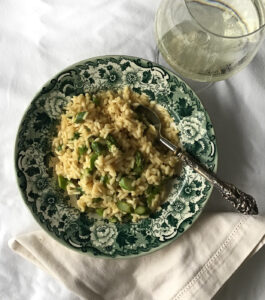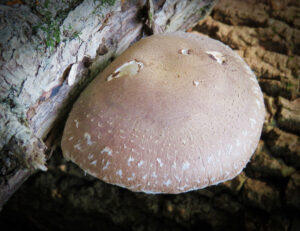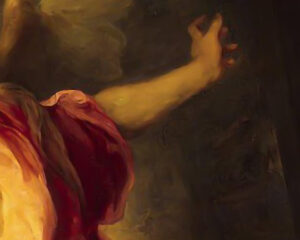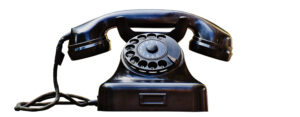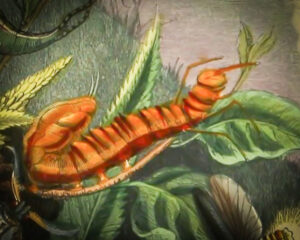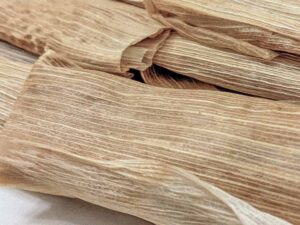Santa & the Daisy
A Short Tale of Pledges, Passages, and a BB Gun

Mrs. Gina Loehr
Every year my kids send letters to the North Pole. The contents of these epistles often reflect the marketing prowess of the Fleet Farm “Toyland” catalog, which appears earlier and earlier in our mailbox each holiday season. Last year it showed up before Halloween, but I made the kids wait until December to petition Mr. Claus.
The girls especially are influenced by what they see in those pages, but I remember the year when my oldest son was just learning to write. As his sisters pored over the pages to assemble their lists, he diligently put pencil to paper to tell Santa in no uncertain terms what was on his mind. The letter read as follows:
“Dear Santa. Hammer.”
Every year after, he had a short but specific list, eventually adding also a more polite inquiry into Santa’s health and a word of thanks for the previous year’s booty. But when he was eight years old, something went awry. He requested, again rather simply, a shotgun.
Santa decided to grant his wish, to a degree, but also made a prudent decision. Instead of giving the child a full-fledged shotgun, the jolly old elf placed under the tree that Christmas morning a Daisy brand BB gun. My son was astonished to find it and explained in gleeful wonder that he had only meant to request a plastic toy shotgun that he had seen (where else?) in the Fleet Farm catalog.
My husband and I were at that moment a bit embarrassed for Santa, who probably would have waited a year or two on the Daisy if a firearm had not appeared to be our boy’s solitary Yuletide desire. But here we were, with an eight-year-old who had a sort-of-gun to get to know. So we resolved to make the best of the situation.
My husband and I were at that moment a bit embarrassed for Santa, who probably would have waited a year or two on the Daisy if a firearm had not appeared to be our boy’s solitary Yuletide desire.
It happens that my father was still in possession of the very Daisy rifle that he had received as a Christmas gift when he was a boy. We were at my parents’ house for Christmas, and soon enough my dad went to retrieve the fragile instrument from the bowels of the basement. With their respective air guns in hand, grandfather proceeded to lead grandson in reciting the Daisy Pledge:
I pledge myself to protect people, animals, and property in my community by always aiming and shooting my Daisy safely.
I was proud of my dad for remembering there was a pledge to go with this gun, and proud of the 1950s Daisy people for making it up. I was proud of my son for treating the moment with decorum and, in the end, proud of Santa for giving my son a chance to learn early on that carrying a weapon is serious business.
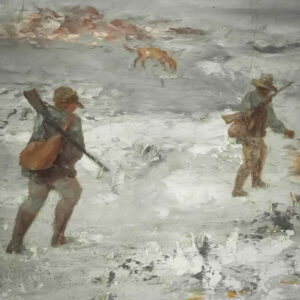 Having both committed the pledge to memory, grandfather and grandson marched to the backyard, guns poised safely atop their shoulders, and began to engage in a target contest. Watching from the kitchen window, I could not help but relish the sight of my little boy having this uniquely masculine experience with Grandad in the outdoors, quite apart from the materialistic reveries of his sisters, who were inside the house swimming in their new toys.
Having both committed the pledge to memory, grandfather and grandson marched to the backyard, guns poised safely atop their shoulders, and began to engage in a target contest. Watching from the kitchen window, I could not help but relish the sight of my little boy having this uniquely masculine experience with Grandad in the outdoors, quite apart from the materialistic reveries of his sisters, who were inside the house swimming in their new toys.
At the time, he eagerly anticipated the day when he would join his father and uncles in their annual hunting adventure throughout the Loehr family woods and marshes. The sight of guns on that side of the family is nothing surprising. But to see my professor-emeritus father, who never went hunting a day in his life, leading this ritual made me wonder if deep within every man’s heart, there lies a call to be master over nature. A gun is an icon of that point where the human intellect conquers the power — at times the danger — of nature. It is a harness that allows humanity to obtain what it needs from the earth. And guns possess a kind of god-like power in their ability to both protect life and cause death. Is it a necessary evil? A requisite tool for man’s dominion over nature? I don’t know. Whatever the case, a gun is not a toy. And even the plastic pistols that take up residence in our home come with our strict instructions from day one: “Never aim guns at people.” Perhaps it is this very gravity that is the substance of the solemn trust conveyed, grandfather to father to son. But I digress.
The cardboard target leaned up on a crate in the backyard and did not suffer much damage. The antique Daisy proved to be nearly incapacitated, dropping BBs in a slow arc a few feet from my father’s toe. And the new Daisy proved to be too long for my son’s miniature arm span, so he could hardly get a shot off. The whole proceeding had a glorious nobility about it nonetheless, and I felt as though my son was being initiated into an early rite of passage.
The whole proceeding had a glorious nobility about it nonetheless, and I felt as though my son was being initiated into an early rite of passage.
That was all five years ago. He is thirteen now. Over those years, he has occasionally pulled out his BB gun to aim at certain disease-carrying birds who sometimes visit our barn. He may have averaged one down a year, if that. But statistics don’t matter as much as the fact that when he heads to the barn with his Daisy in hand, he identifies himself as a young man with a serious job.
And, like his older sister before him, he has lately graduated from the Wisconsin hunter’s safety program. He goes out, now bearing heavier arms, with his sister and father and uncles to the stand in the marsh on the north part of our land, where the trees begin to thin. And just last week, he took home his first deer: a seven-point buck. Thus helping feed his family for the winter.
I think more kids should have this understanding of their mission and their potential and their trajectory toward something beyond childhood. Of course, this flavor of growing-up experience doesn’t require a weapon. But it is a traditional, appropriate, and effective way to get the job done. It is a key aspect of the right-of-passage practices of countless cultures throughout history — cultures that tended to have children who were able to become adults. Maybe Santa knew what he was doing after all.
